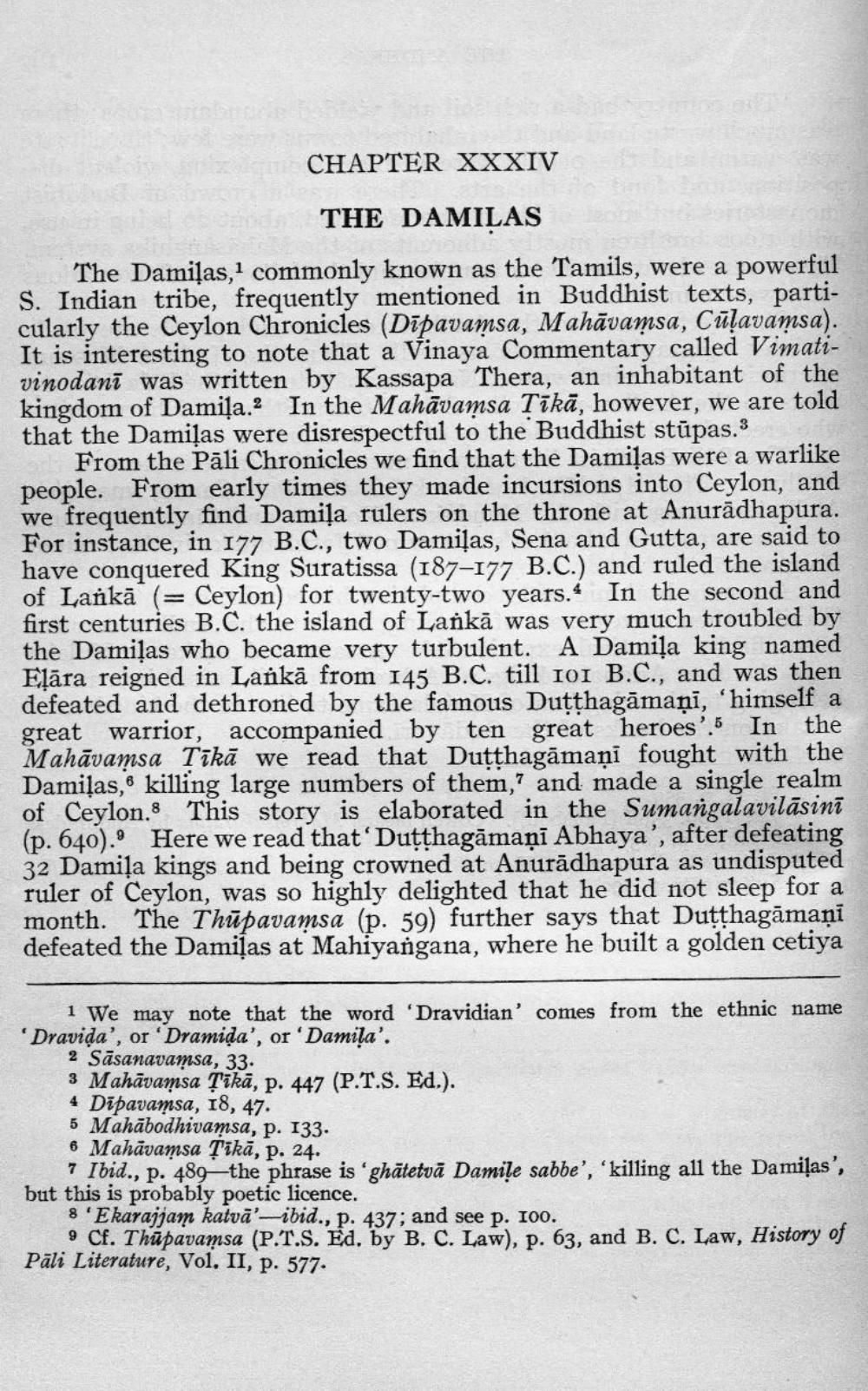________________
CHAPTER XXXIV
THE DAMILAS
The Damiļas, commonly known as the Tamils, were a powerful S. Indian tribe, frequently mentioned in Buddhist texts, particularly the Ceylon Chronicles (Dīpavamsa, Mahāvamsa, Cūlavamsa). It is interesting to note that a Vinaya Commentary called Vimativinodanī was written by Kassapa Thera, an inhabitant of the kingdom of Damila.2 In the Mahāvamsa Tīkā, however, we are told that the Damiļas were disrespectful to the Buddhist stūpas.
From the Pāli Chronicles we find that the Damiļas were a warlike people. From early times they made incursions into Ceylon, and we frequently find Damila rulers on the throne at Anurādhapura. For instance, in 177 B.C., two Damiļas, Sena and Gutta, are said to have conquered King Suratissa (187-177 B.C.) and ruled the island of Lankā (= Ceylon) for twenty-two years. In the second and first centuries B.C. the island of Lankā was very much troubled by the Damiļas who became very turbulent. A Damiļa king named Eļāra reigned in Lankā from 145 B.C. till 101 B.C., and was then defeated and dethroned by the famous Dutthagāmaņi, 'himself a great warrior, accompanied by ten great heroes'.5 In the Mahāvamsa Tīkā we read that Dutthagāmaņi fought with the Damiļas, killing large numbers of them, and made a single realm of Ceylon. This story is elaborated in the Sumangalavilāsini (p. 640). Here we read that' Dutthagāmaņi Abhaya', after defeating 32 Damiļa kings and being crowned at Anuradhapura as undisputed ruler of Ceylon, was so highly delighted that he did not sleep for a month. The Thūpavamsa (p. 59) further says that Dutthagāmaņi defeated the Damiļas at Mahiyangana, where he built a golden cetiya
1 We may note that the word 'Dravidian' comes from the ethnic name Dravida', or 'Dramida' or 'Damila'.
2 Sāsanavamsa, 33. 3 Mahāvamsa Tīkā, p. 447 (P.T.S. Ed.). 4 Dipavamsa, 18, 47. 5 Mahābodhivamsa, p. 133.
6 Mahāvamsa Tikā, p. 24. | 7 Ibid., p. 489--the phrase is ‘ghātetvā Damile sabbe', ‘killing all the Damiļas', but this is probably poetic licence.
8 'Ekarajjam katvā'-ibid., p. 437; and see p. 100.
9 Cf. Thūpavamsa (P.T.S. Ed. by B. C. Law), p. 63, and B. C. Law, History of Pali Literature, Vol. II, p. 577.




